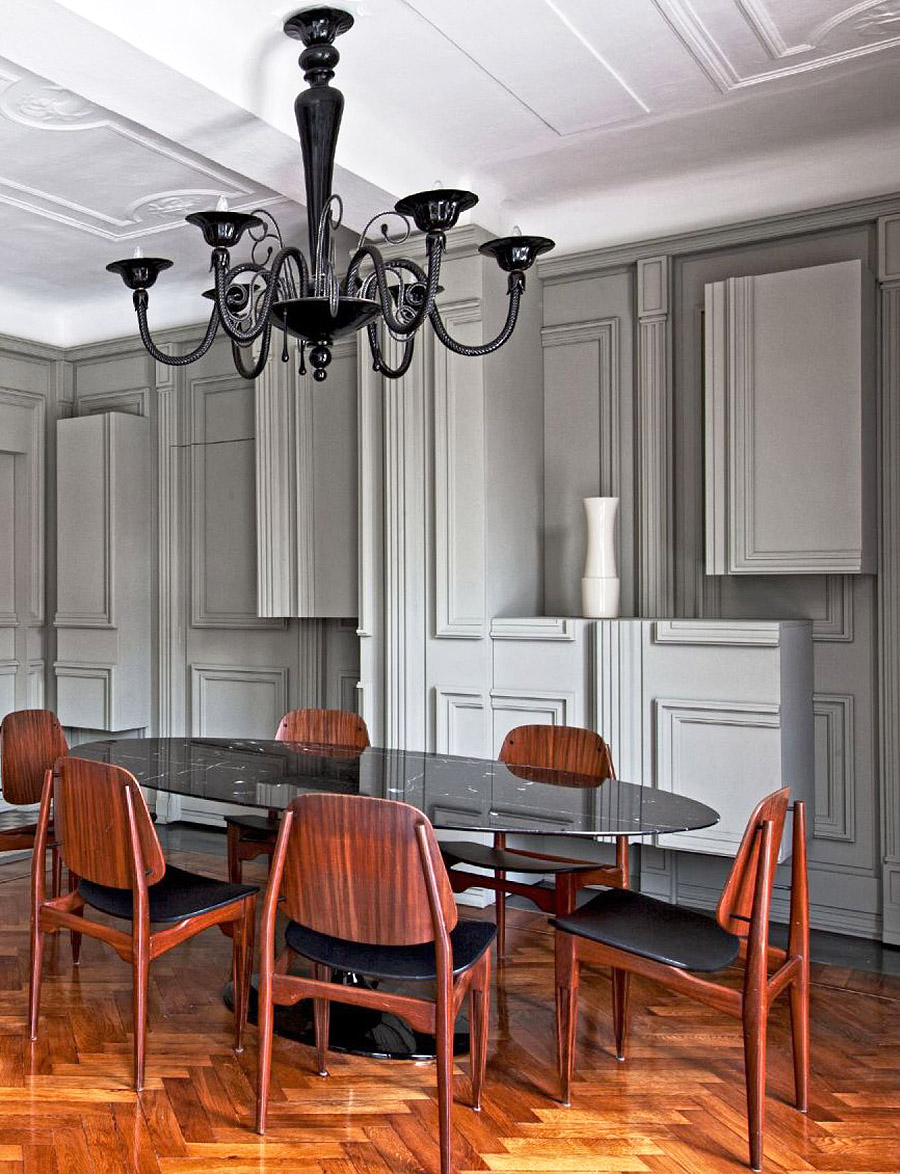
MAISON DELL'ACQUA

PHOTOGRAPHY: SIMON WATSON

PHOTOGRAPHY: FABRIZIO CICCONI



PHOTOGRAPHY: HELENIO BARBETTA



HOUSE TOUR
A Fashion Designer's Home Is The Vision Of Elegance. Text By Maeve Hosea
A Fashion Designer's Home Is The Vision Of Elegance. Text By Maeve Hosea
Published on Elle Decor USA on January 15, 2015
Designer Alessandro Dell'Acqua approaches both the fashion house of Rochas and his apartment in Milan in the same way—with a fresh vision of the classics.
"My house is a part of me. Choosing how to furnish it is a bit like choosing what to wear—I have very specific taste, and I use only what represents me best," explains Italian fashion designer Alessandro Dell'Acqua. Three years ago—inspired by film, fashion, and Parisian chic—he set about crafting an elegant, idiosyncratic home for himself, his partner, and their dog, Gringo, channeling his creativity into a derelict piece of Milanese architecture. The living room of fashion designer Alessandro Dell'Acqua's Milan apartment, which was renovated by architect Hannes Peer. The leather sofa is by Cargo, a prototype lamp by Peer hangs above a Mies van der Rohe Barcelona chair by Knoll, and the painting is by Mario Schifano; the 19th-century rosewood cabinet is a family heirloom, and the terrazzo flooring is original.
Dell'Acqua, who two years ago was named creative director for the French label Rochas, first got to know his locale, the lively Piazzale Susa district, when he opened an atelier for his own line, No. 21, in 2010. "I love this neighborhood," he says. "I'm attracted to its bustling streets, youthful population, and eclectic shops." The dining room's boiserie features interlocking niches and shelving and a door that leads to a powder room; the cherry fish-bone parquet is original.
Advertisement - Continue Reading Below
But it wasn't until he was walking his dog there two years later that he discovered a pair of apartments for sale on a classic 1930s block. He immediately saw that if he knocked down the walls between the two spaces, he could create a capacious living and dining area, with enough room for a large bathroom. A set of 1960s Italian chairs surrounds a Saarinen table by Knoll in the dining room; the 1940s Murano glass chandelier is by Barovier e Toso.
The contemporary kitchen he envisaged would be open to the dining area but could be screened off with stained-glass sliding doors. The layout would also accommodate a work studio for his label. A Juergen Teller photograph for a Dell'Acqua ad campaign rests atop a custom-designed cast-concrete surround for the Carrara marble fireplace; the photograph of Anna Magnani is by Roberto Rossellini.
While wanting to inject his own warmth and style, the designer was keen to preserve the apartments' fine period interior architecture, from richly patterned floors to stucco ceilings. To these details he added a base of natural materials, such as rosewood and marble, while sections of gray cement resin on the floor deliberately mark where the walls dividing the two flats once stood. Dell'Acqua in his showroom.
"I have a lot of respect for the past, but I like to include contemporary elements as well," he says. "I tried to create a complicity between past and present—a sort of design dialogue." A key example is his modern take on sculptured boiserie paneling, conceived with architect Hannes Peer. This feature, referencing 18th-century Parisian interiors, lends a slightly surreal look to the apartment, with cantilevered cabinets and hidden doors built into and onto the existing woodwork. The kitchen's stained-glass sliding doors were inspired by ones designed by Frank Lloyd Wright for Unity Temple; a 1969 light fixture by Gaetano Sciolari hangs above Philippe Starck La Marie Ghost chairs by Kartell, the range and exhaust fan are by Euromobil, and the terrazzo flooring is original.
Much of the drama in Dell'Acqua's home comes from his passion for cinema: The fireplace in the living room is similar to the one Catherine Deneuve lounges in front of in The Hunger; the mirror elements beside the bathroom are reminiscent of the final scene of Orson Welles's The Lady from Shang hai; and the bath is inspired by Jeanne Moreau's steamy scene in director Michelangelo Antoni oni's La Notte. The master bath's tub is by Cargo, the 1940s chandelier is by Barovier e Toso, and the walls and floor are sheathed in Nero Marquina marble.
It all adds up to a compelling space that is quietly exotic but also witty and convivial. "My home combines Italian tradition and Parisian style with a lighthearted, contemporary touch: all the things I find most inspiring."